
Program Book
Join us for an evening of beautiful music as artists from The Patrick G. and Shirley W. Ryan Opera Center perform a variety of favorites accompanied by members of the Lyric Opera Orchestra and conducted by Enrique Mazzola, Lyric’s new music director. Bring a blanket, your favorite snacks, and your fellow music lovers for this can’t-miss summer delight that’s part of Chicago In Tune, a citywide festival celebrating our city’s legendary music community.
A note on safety: By attending this event, you agree to follow the protocols at lyricopera.org/safety. Millennium Park requires that unvaccinated individuals wear a mask properly covering their nose and mouth. At Lyric Opera, we encourage all guests at this family-friendly event to wear masks unless they are actively eating or drinking, regardless of vaccination status.
The Patrick G. and Shirley W. Ryan Opera Center 2021|22 Ensemble
-

Katherine Beck
Mezzo-Soprano
Ryan Opera Center Ensemble
Originally from Bennington, Vermont, second-year mezzo-soprano Katherine Beck was most recently heard onstage at the Metropolitan Opera, where she competed as a semi-finalist in the Eric and Dominique Laffont Competition in February 2020.
-
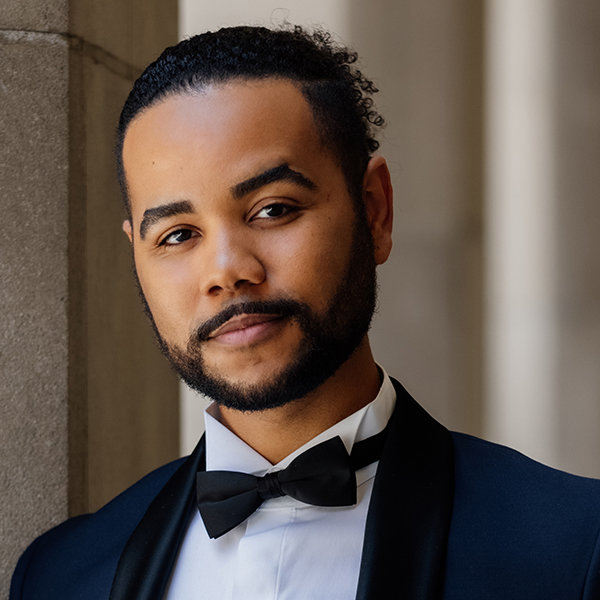
Martin Luther Clark
Tenor
Ryan Opera Center Ensemble
Third-year Ryan Opera Center tenor Martin Luther Clark recently completed his studies at the Curtis Institute of Music, receiving a master’s degree in opera.
-

Leroy Davis
Baritone
Ryan Opera Center Ensemble
Baritone Leroy Davis is a second-year member of the Ryan Opera Center.
-

Katherine DeYoung
Mezzo-Soprano
Ryan Opera Center Ensemble
Third-year Ryan Opera Center mezzo-soprano Katherine DeYoung hails from Traverse City, Michigan.
-

Mathilda Edge
Soprano
Ryan Opera Center Ensemble
Third-year soprano Mathilda Edge, originally from Chandlerville, Illinois, is an alumna of Indiana University’s Jacobs School of Music, where she earned her master’s degree in Vocal Performance.
-

Kathleen Felty
Mezzo-Soprano
Ryan Opera Center Ensemble
Mezzo-soprano Kathleen Felty, from Lubbock, Texas, is a third-year member of the Ryan Opera Center.
-

Lunga Eric Hallam
Tenor
Ryan Opera Center Ensemble
Third-year Ryan Opera Center tenor Lunga Eric Hallam is from Khayelitsha, South Africa.
-

Rivers Hawkins
Bass
Ryan Opera Center Ensemble
First-year Ryan Opera Center bass Rivers Hawkins is a native of Columbia, South Carolina.
-

Donald Lee III
Conductor/Pianist
Ryan Opera Center Ensemble
Originally from Hampton, Virginia, Donald Lee III is the inaugural Ryan Opera Center conductor/pianist, a new Ensemble position in 2021/22.
-

Maria Novella Malfatti
Soprano
Ryan Opera Center Ensemble
Italian soprano Maria Novella Malfatti is a second-year Ryan Opera Center member.
-

Anthony Reed
Bass
Ryan Opera Center Ensemble
Bass Anthony Reed is a third-year member of the Ryan Opera Center and an alumnus of the Curtis Institute of Music and the University of Wisconsin-Eau Claire.
-

Chris Reynolds
Pianist
Ryan Opera Center Ensemble
Third-year Ryan Opera Center pianist Chris Reynolds has made a name for himself as both a soloist and a collaborator.
-

Denis Vélez
Soprano
Ryan Opera Center Ensemble
Third-year Ryan Opera Center soprano Denis Vélez, from Puebla, Mexico, was a national winner of the Metropolitan Opera Eric and Dominique Laffont Competition in 2020.
-

Enrique Mazzola
Conductor
As of July 1, 2021, Italian conductor Enrique Mazzola is music director of Lyric Opera of Chicago. He is only the third person to serve in this capacity at Lyric, following the tenures of Sir Andrew Davis and the late Bruno Bartoletti.
Stage Manager: Daniel Sokalski
Assistant Stage Managers: Amy C. Thompson, David Carl Toulson
Projected English Texts: Patricia Houk/Jeremy Johnson, Matthew Lata, Roger Pines, Francis Rizzo, Colin Ure
Program notes
-
Gioachino Rossini, Guillaume Tell, Overture
Enrique Mazzola and Donald Lee III, conductors
Although best known for comedies, Rossini composed a great many deeply serious stage works. The most imposing was his final opera Guillaume Tell (William Tell), first performed at the Opéra de Paris in 1829. It was a grand opera with all the attributes that Parisian audiences would have expected of that genre: great length (four long acts), a cast boasting truly dramatic voices among the principals, vocal fireworks galore, thrilling choruses, and a grand-scale ballet.
The title role (baritone) and that of the leading lady, Mathilde (soprano), are demanding in terms of amplitude of voice and nobility of expression, but it’s the superhumanly difficult music for Arnold, the leading tenor, that makes the opera so challenging to cast. This, combined with the numerous sets, the large chorus and corps de ballet, and the work’s length, makes Guillaume Tell a work that, even today, is a rarity in opera houses internationally. (Lyric has never performed it, and when the Metropolitan Opera staged it in 2016, it was the work’s first appearance there in more than eight decades.) However, the thrilling, 12-minute overture remains a staple in concert halls the world over, familiar above all for the galloping and exhilarating theme of the final section (the Lone Ranger made it famous on radio, in the movies, and on television). Especially prominent during the overture are the solo cello in the quiet opening, the English horn in the pastoral third section, and the trumpets in the finale.
-
Wolfgang Amadeus Mozart
The Magic FluteAct One, “Zu Hilfe! Zu Hilfe!”
Martin Luther Clark, tenor (Tamino); Mathilda Edge, soprano (First Lady); Katherine DeYoung, mezzo-soprano (Second Lady); Kathleen Felty, mezzo-soprano (Third Lady)Act One, “Hm! Hm! Hm!”
Leroy Davis, baritone (Papageno); Martin Luther Clark, tenor (Tamino); Mathilda Edge, soprano (First Lady); Katherine DeYoung, mezzo-soprano (Second Lady); Kathleen Felty, mezzo-soprano (Third Lady)Act One, “Bei Männern welche Liebe fühlen”
Denis Vélez, soprano (Pamina); Leroy Davis, baritone (Papageno)Act Two, “Pa, pa, pa”
Leroy Davis, baritone (Papageno); Denis Vélez, soprano (Papagena)Die Zauberflöte (The Magic Flute), written as an “opera for the people,” premiered at the Theater auf der Wieden in Vienna, a venue frequented by audiences from all walks of life. First heard in 1791, just two months before Mozart’s untimely death, Flute was a collaboration between the composer and actor/theater manager Emanuel Schikaneder, who also performed the role of Papageno. It was also a Singspiel—a stage work combining music with spoken dialogue. The opera’s dramatic content has admittedly been problematic since the feminist era began more than half a century ago. (After all, what does Sarastro say of the Queen of the Night? “A woman does little, but talks a lot.”) The music, however, stands high among the glories of opera, characterized by something for everyone—lyrical outpourings for the romantic leads, comic and folk-like solos for Papageno, coloratura fireworks for the Queen, and immensely dignified legato arias for Sarastro. Above all, the opera is genuinely life-enhancing at the close, anticipating a bright future for all humanity.
The opera begins with Prince Tamino rushing onstage, pursued by a monstrous snake (sometimes designers depict a dragon). He faints, but is saved from certain death by three ladies, who kill the creature with their spears. In their ensuing trio, the ladies take a moment to admire Tamino, each desperately wanting to remain behind with him while the other two report back to the Queen of the Night, whom they serve. With much regret, the three finally determine that their only alternative is to leave together.
When Tamino awakens, he’s surprised by the queen’s birdcatcher, who lies by declaring that it was he who killed the creature—and with his bare hands! The ladies instantly appear, punishing him by locking his mouth with a padlock. They then hand Tamino a small portrait of the queen’s daughter, Pamina, who has been abducted by the queen’s enemy, Sarastro. Tamino instantly falls in love with the beautiful young woman in the portrait. The queen herself appears, telling Tamino of the abduction, and declaring that if he saves Pamina, she will be his. After the queen vanishes, the ladies reappear, which begins one of the most enchanting ensembles in all of Mozart. In this quintet, the ladies unlock Papageno’s mouth and announce that he will accompany Tamino on the prince’s journey to Pamina. The ladies give the pair special gifts that can protect them: a magic flute for the prince and a set of magic bells for the birdcatcher.
Papageno is separated from Tamino, but when he reaches Sarastro’s realm, he does find Pamina. She’s ecstatic to hear that the prince is in love with her. Papageno confides in Pamina that he longs for female companionship. The two pause to sing a sweet duet praising the joys of married life.
For Tamino to win Pamina and enter the brotherhood ruled by Sarastro, he must pass a series of trials. Likewise, Papageno undergoes trials to gain the hand of Papagena, the young woman Sarastro and his fellow priests have found for him. Although unsuccessful in the trials and initially denied Papagena’s company, Papageno, with the help of his magic bells, is ultimately united with her. They sing an endearing duet, in which they look forward to a future together that includes many children.
-
Giuseppe Verdi, Macbeth, Act Two, “Come, dal ciel precipita”
Anthony Reed, bass (Banco)
Verdi was inching toward greatness throughout his first decade of operatic composition. During the period from his first opera, Oberto (1839), to Luisa Miller (1849), the most significant work was Macbeth (1847). However, the Macbeth that audiences heard at the Florence premiere didn’t satisfy Verdi. Very important revisions were made for the first Paris performances in 1865, including a radically different new aria for Lady Macbeth; the addition of a full-scale ballet in the second scene; a new chorus; and the deletion of Macbeth’s death aria. The latter change enabled Verdi to keep the title character’s demise offstage and end the opera with the victorious soldiers and relieved refugees.
One aria from 1847 that remained in the revised Macbeth was that of the opera’s leading bass, Banco (Banquo in Shakespeare’s play). Early in the opera, the witches prophesy that Macbeth will be King of Scotland, but that Banco will be only a progenitorof kings. When Macbeth becomes first Thane of Cawdor and then takes the throne himself (after murdering King Duncan), Banco sees the prophecy fulfilled. Midway in Act Two, walking with his son Fleance outside Macbeth’s castle, Banco has feelings of doom. In his brooding aria, “Come dal ciel precipita” (“How the gloom falls from heaven”), he remembers the dark night when Duncan was killed. Now his own thoughts are disturbed by fear. Verdi allows those thoughts to pour out of Banco in one stirring, deeply felt legato phrase after another. Just moments after he finishes the aria, he is killed by the assassins lying in wait for him, but Fleance escapes.
-
Daniel Catán, Florencia en el Amazonas (Florencia in the Amazon), Act Two, “¿Arcadio?” “¿Rosalba?”
Denis Vélez, soprano (Rosalba); Martin Luther Clark, tenor (Arcadio)
Daniel Catán (1949-2011) is recognized internationally not only as one of the most distinguished musicians in the modern history of Mexico, but also as one of the most successful of all contemporary opera composers. In 1994, his opera La Hija de Rappaccini (Rappaccini’s Daughter) was the first work by a Mexican composer to be produced by a major American opera company. Two years later, Houston Grand Opera presented the premiere of Florencia en el Amazonas, the first Spanish-language opera to be commissioned by American opera houses (in this case, Houston, Los Angeles, and Seattle, who collaborated with the opera of Bogotá, Colombia). During Lyric’s 2021/22 Season, it will be the company’s first Spanish-language opera on Lyric’s mainstage, as well. Marcela Fuentes-Berain, Florencia’s librettist, found her inspiration in the foremost exponent of “magical realism;” Gabriel García Márquez, who mastered the art of integrating supernatural/fantastic elements into otherwise realistic fiction. Catán responded to this style with music of incomparable coloristic imagination and expressive fervor.
Like Puccini’s Tosca, the heroine of Florencia en el Amazonas is an opera diva, in this case from the early 1900s. Florencia is traveling incognito on a boat that is moving down the Amazon to Manaus, Brazil, where she will be performing at the city’s opera house. In Manaus, she also hopes to encounter Cristóbal, her lover from years before. Among the other passengers is Rosalba, a young reporter preparing a book about Florencia, who is eager to encounter her in person but has no idea that she is actually on board. A young man named Arcadio, nephew of the boat’s captain, is in love with Rosalba. After a violent storm, each is astonished to discover that the other is still alive. In their musically grandiose duet, their feeling for each other is obvious, although at the same time they hesitate to surrender to love, since it can so often lead to disaster.
-
Irving Berlin, “I Love a Piano”
Katherine Beck, mezzo-soprano; Chris Reynolds, piano
During the six decades of Irving Berlin’s career, his output of songs was vast. He did have some special favorites among them, one of which was “I Love a Piano.” Like so many of Berlin’s best-loved songs, this one originated on Broadway. Audiences first heard it in a now-forgotten musical revue entitled Stop! Look! Listen!, which premiered on Christmas Day in 1915. “I Love a Piano” remains the only well-known song from that show. Apparently it was sung onstage to the accompaniment of numerous pianists (some reports say there were six, others say eight). One review likened the song’s particularly boisterous style to another huge hit by Berlin, "Alexander's Ragtime Band," which he had introduced four years earlier. “I Love a Piano” was recorded for the first time the year after it was written, performed by Billy Murray, one of the most famous American popular singers of the early 20th century. Since then, the artists who have covered the song on records include everyone from Barbara Cook to Tony Bennett and Burl Ives, not to mention pianists like André Previn. Michael Feinstein, and—not unexpectedly—Liberace.
-
Terrence Blanchard and Kasi Lemmons, Fire Shut Up in My Bones, Act Two, “Peculiar Grace”
Leroy Davis, baritone (Charles)
Six-time Grammy winner Terence Blanchard scored a triumph in 2019 with the premiere of his second opera (an “opera in jazz,” as he described it), Fire Shut Up in My Bones, at Opera Theatre of Saint Louis. That same company commissioned both Fire and, six years previously, Champion, Blanchard’s first opera, which had enjoyed a similarly successful premiere. Abounding with musical variety and dramatic flair, Fire was a collaboration between Blanchard and the brilliant actress/director/screenwriter Kasi Lemmons. Their dramatic source was the 2014 book of the same name—one of the most acclaimed memoirs of recent years—by Charles M. Blow, the celebrated New York Times columnist. Blow was documenting the despair and violence of an upbringing in segregated Louisiana, while also revealing his harrowing experience with sexual abuse.
The structure of the Blanchard/Lemmons opera was highly innovative, including the character of Charles being depicted by two performers, one a boy treble and the other an adult baritone. (It is the child Charles who is abused by an older cousin.) There is also a double-sided character, Destiny and Loneliness, played by a single soprano. That singer also plays a young woman named Greta (with whom Charles has a one-night stand in college), and another soprano portrays Charles’s strong, courageous mother. It is Charles who remains the emotional heart of the work, and his somber, deeply moving view of himself as a boy of “peculiar grace” is one of the score’s lyrical highlights. This is an aria in the greatest tradition of American opera, which one can anticipate being embraced by English-speaking baritones everywhere.
-
Giacomo Puccini, Tosca, Act Two, “Vissi d’arte”
Mathilda Edge, soprano (Tosca)
The first great opera of the twentieth century, Puccini’s Tosca premiered in Rome (the city in which the action takes place) on January 14, 1900. Since then, it has never been absent from opera houses internationally. That’s no surprise, given that the composer and his librettists, Giuseppe Guacos and Luigi Illica, created an extraordinarily taut melodrama that communicates unique excitement from start to finish. The heroine’s character and music have attracted virtually every great Puccini soprano; after all, who would pass up the chance to sing and act a character who’s the most celebrated singer in Rome, is in love with a handsome painter, stabs the villainous baritone who lusts after her, and—when the murder is discovered—throws herself off the parapet of the Castel Sant’Angelo in one of the most spectacular exits in opera?
Floria Tosca’s lover, Mario Cavaradossi, isn’t just a painter—he’s also a revolutionary who has made himself the enemy of Rome’s police chief, Scarpia. Early in the opera’s second act, Cavaradossi, having just been apprehended by Scarpia’s men, is brought to him for questioning. After Cavaadossi refuses to answer Scarpia’s questions, he is tortured and then sent to the prison at the Castel Sant’Angelo, where he will be executed by firing squad at dawn. Scarpia then offers Tosca a bargain: if she will submit to his advances for one night, he will save Cavaradossi’s life. At her moment of decision, Tosca turns to God in despair and wonders, after she has lived only for art and for life, why He repays her in this way. With its soulful melody, the thrilling climactic leap to a sustained high B-flat, and heartfelt conclusion, “Vissi d’arte” (“I lived for art”) remains one of the most beloved arias in the soprano repertoire.
-
Gaetano Donizetti, L’elisir d’amore (The Elixir of Love):
Act One, “Caro elisir, sei mio”
Lunga Eric Hallam, tenor (Nemorino); Maria Novella Malfatti, soprano (Adina)Act Two, “Una furtiva lagrima”
Lunga Eric Hallam, tenor (Nemorino)Act Two, “Prendi, per me sei libero”
Maria Novella Malfatti, soprano (Adina)In 1832, just two years after the triumph of Donizetti’s Anna Bolena, the composer introduced audiences to L’elisir d’amore. Premiered in Milan, it brought him to a new level of recognition. Elisir, which found him at the height of his powers, is a comedy with a heart. Donizetti was able to take an enchanting story and bring it to captivating life in each scene. Everything in Elisir simply works: the arias are charming and thoroughly characterful, while the six duets allow the artists to develop a special stage rapport through the musical and dramatic interplay so brilliantly constructed by Donizetti and librettist Felice Romani. The individual musical numbers are among the most beloved in Italian opera, especially “Una furtiva lagrima” (“One furtive tear”), a favorite of virtually all lyric tenors.
In a small Italian village, a simple lad named Nemorino falls in love with Adina, a wealthy landowner, who doesn’t take his feelings seriously. When Dulcamara, a quack doctor, comes to town selling a love potion, Nemorino buys a bottle (unaware that it’s actually just Bordeaux wine), and anticipates that Dulcamara’s claim for the elixir will come true: that is, he assumes that Adina will love him in 24 hours. The second of the opera’s tenor-soprano duets begins with his excitement as he takes his first sip. When Adina appears, his over-confident behavior alienates her, but he insists that it will be a different story tomorrow.
Nemorino’s aria in Act Two, immediately followed by Adina’s, is certainly the most touching portion of Elisir. Nemorino saw a tear in Adina’s eye as she watched a group of village girls paying him considerable attention (Nemorino attributes this to the elixir, not knowing that the girls have heard that his rich uncle has died and left him all his money). In the deeply heartfelt “Una furtiva lagrima,” Nemorino ecstatically declares that now he knows she loves him.
Previously in the opera—when Nemorino was in despair because Adina was about to marry his rival, the sergeant Belcore—he had decided to enlist in the army. Now, immediately following Nemorino’s aria, she appears with the commission, which she has bought back. In her exquisite aria, “Prendi, per me sei libero” (“Take it—because of me, you’re free”), she urges him to remain in the village, where he can be surrounded by people who feel such affection for him. Saying nothing more, Nemorino explodes, shouting that since he isn’t going to find true love (that is, from her), he might as well die a soldier. In the exhilaratingly florid music that concludes the scene, Adina at last admits her true feelings and begs him to forget how she treated him before, pledging to love him truly and forever.
-
Gaetano Donizetti, Lucia di Lammermoor, Act Two, “Chi mi frena in tal momento”
Martin Luther Clark (Edgardo); Leroy Davis, baritone (Enrico); Maria Novella Malfatti, soprano (Lucia); Rivers Hawkins, bass (Raimondo); Katherine Beck, mezzo-soprano (Alisa); Lunga Eric Hallam, tenor (Arturo)
Of more than 50 operas composed in a career lasting nearly 30 years, it is, above all, Lucia di Lammermoor (1835) that accounts for Donizetti’s exalted stature in the pantheon of 19th-century Italian composers. In every generation of singers, this opera has attracted the most celebrated interpreters of bel canto repertoire, who have willingly embraced the vocal and dramatic challenges it presents. That goes for the soprano singing the melancholy title role, but also the tenor hero, the baritone villain, and the peacemaking bass, all of whom have glorious opportunities to shine throughout this thrilling score. Based on the novel The Bride of Lammermoor (1819) by Sir Walter Scott, Lucia is a powerful story that still resonates today, with a brother’s abuse and consuming ambition, a lover’s desire for revenge, and a hapless young woman forced into a loveless marriage that leads to catastrophic consequences.
In Scotland in the early 18th century, Edgardo of Ravenswood is the last of his family whose estate has been unjustly taken over by Enrico Ashton. With his own future looking uncertain due to political activities against the king, Enrico decides to improve his situation by arranging a marriage between his sister, Lucia, and the wealthy, influential Lord Arturo Bucklaw. Lucia, however, has fallen in love with Edgardo and pledged to be his wife. After Enrico shows her a forged letter, apparently written by Edgardo to another woman, Lucia believes herself betrayed and brokenheartedly agrees to the marriage. At the wedding festivities, she’s just signed the marriage contract when Edgardo storms into the castle. In the magnificent sextet (arguably the most famous of all operatic ensembles), the characters express their emotions at this moment: Edgardo and Enrico each wonder what restrains their anger (although Edgardo also admits that he still loves Lucia); Lucia longs only for death, and feels betrayed by both earth and heaven; her tutor Raimondo, as well as Arturo and Lucia’s companion Alisa, calls her “a withered rose,” halfway between death and life.
-
Leonard Bernstein, Candide, Act Two, “Make Our Garden Grow”
Entire Ensemble
Candide (1957) is the “problem child” of American musical theater. Based on Voltaire’s celebrated novel and officially designated by its creators as a “comic operetta,” with a score that represents one of the greatest achievements of Leonard Bernstein’s career, the original production was saddled with an unwieldy book by playwright Lillian Hellman and a multiplicity of librettists. The final product lasted less than three months on Broadway, but subsequently reappeared—in Los Angeles and Washington, then on Broadway again—in other versions that satisfied some critics but dismayed others. Some enthusiasts thought that Candide really belonged in the opera house, but there again, it took some time to find the ideal version. With those further updates, another Candide is finally being recognized as a masterpiece and is performed by both theater and opera companies internationally, with the brilliance of the score invariably making a stupendous impact.
The show begins with the title character, a foundling, happy at home in Westphalia, where he has grown up in the castle of a baron, falling in love with the baron’s daughter, Cunegonde. At the same time, he’s indoctrinated by his tutor, Dr. Pangloss, with the philosophy that “all is for the best in this best of all possible worlds.” In a disastrous battle leading to the destruction of Westphalia, Candide and Cunegonde are separated, and each believes the other is dead. Once they’re reunited, the rest of the show takes Candide, Cunegonde, and the unnamed Old Lady on a series of misadventures (in the original version, they traveled from Paris to Buenos Aires and finally to Venice). Candide’s experience of human cruelty, ignorance, and injustice eventually causes him to reject Pangloss’s philosophy. In the end, having returned with Cunegonde to Westphalia, he asks her to marry him and concludes that he and everyone around him must simply strive to do their best in life: “we’ll build our house and chop our wood and make our garden grow.” The glorious opening solo lines—first for Candide, then for Cunegonde—lead to a glorious ensemble piece that remains an anthem for decency and unity between human beings, as moving today as it was when audiences first heard it more than six decades ago.
2021|22 Lyric Opera Orchestra
Violin I
-

Robert Hanford
Violin I | Concertmaster
Robert Hanford is a violinist and concertmaster with the Lyric Opera Orchestra.
-

Alexander Belavsky
Violin
Alexander Belavsky is a violinist with the Lyric Opera Orchestra.
-

-

-

-

-
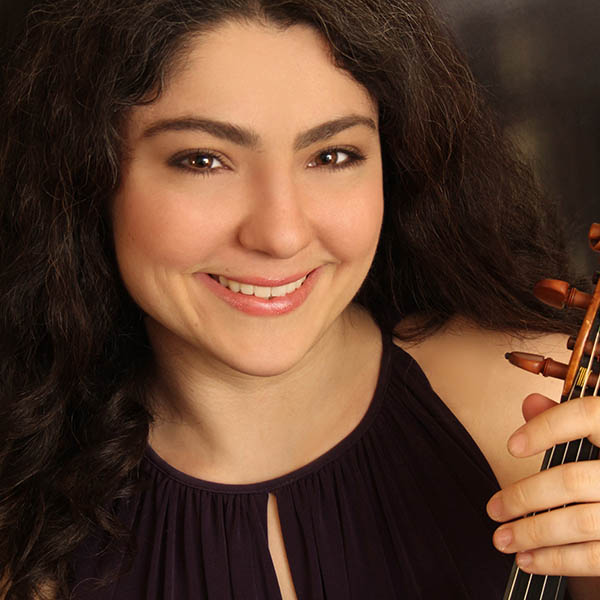
Violin II
-

Yin Shen
Violin
Yin Shen is the principal violin II player with the Lyric Opera Orchestra.
-

-

Diane Duraffourg-Robinson
Violin
Diane Duraffourg-Robinson is a violinist with the Lyric Opera Orchestra.
-

-

-

-

-

* On leave, 2022/23 Season
Viola
-

-

Terri Van Valkinburgh
Viola
Terri Van Valkinburgh plays the viola with the Lyric Opera Orchestra.
-

-

-
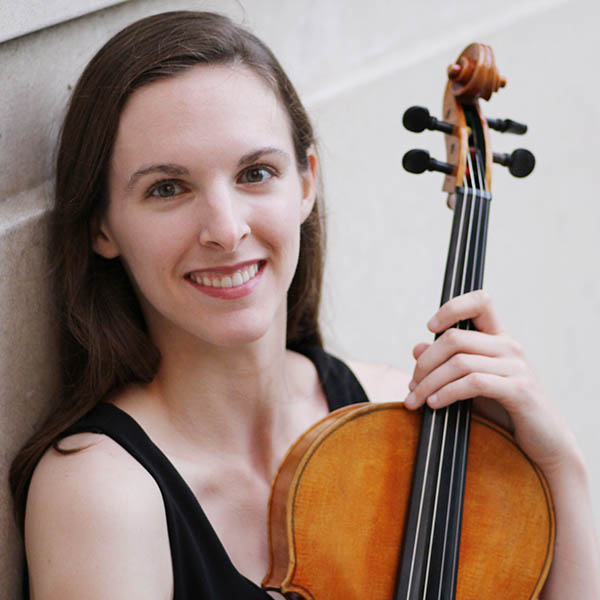
-

Melissa Trier Kirk
Viola
Melissa Trier Kirk plays the viola with the Lyric Opera Orchestra.
Cello
-

-

Paul Dwyer
Cello | Assistant Principal
Paul Dwyer is a cellist with the Lyric Opera Orchestra.
-

Mark Brandfonbrener
Cello
Mark Brandfonbrener is a cellist with the Lyric Opera Orchestra.
-

-

Bass
-

-

-

Andrew L. W. Anderson
String Bass
Andrew L. W. Anderson is a bassist with the Lyric Opera Orchestra.
-

-

Collins R. Trier
String Bass
Collins R. Trier is a bassist with the Lyric Opera Orchestra.
Flute
-
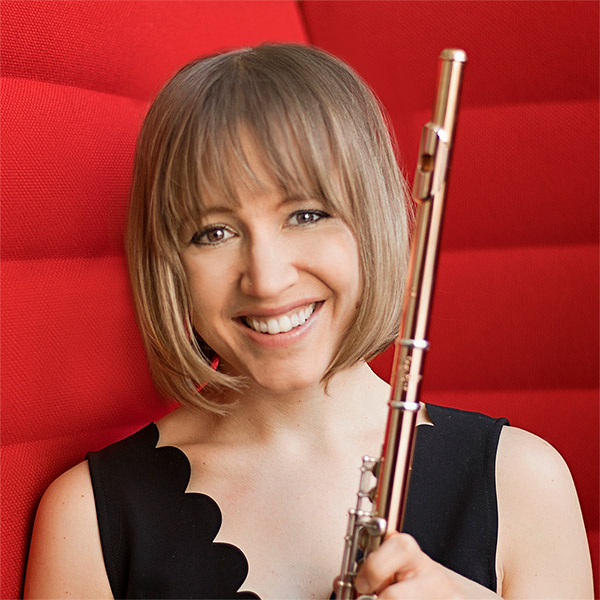
-

-
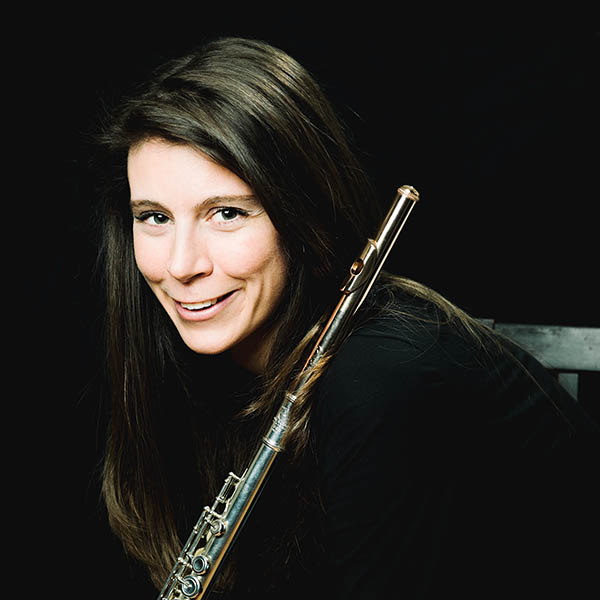
Alyce Johnson
Flute | Piccolo
Alyce Johnson plays flute and piccolo with the Lyric Opera Orchestra.
* On leave, 2022/23 Season
Piccolo
-

Alyce Johnson
Flute | Piccolo
Alyce Johnson plays flute and piccolo with the Lyric Opera Orchestra.
* On leave, 2022/23 Season
Oboe
-

-

Judith Zunamon Lewis
Oboe | English Horn
Judith Zunamon Lewis is an oboist with the Lyric Opera Orchestra.
** Season Substitute
English Horn
-

Judith Zunamon Lewis
Oboe | English Horn
Judith Zunamon Lewis is an oboist with the Lyric Opera Orchestra.
Clarinet
-

-

Danny Mui
** Season Substitute
Trombone
-

Jeremy Moeller
Trombone | Principal
Jeremy Moeller plays trombone with the Lyric Opera Orchestra.
-

Bassoon
-

Preman Tilson
Bassoon
-

Lewis Kirk
Bassoon | Contrabassoon
Lewis Kirk is a bassoonist with the Lyric Opera Orchestra.
Contrabassoon
-

Lewis Kirk
Bassoon | Contrabassoon
Lewis Kirk is a bassoonist with the Lyric Opera Orchestra.
Horn
Trumpet
-

-
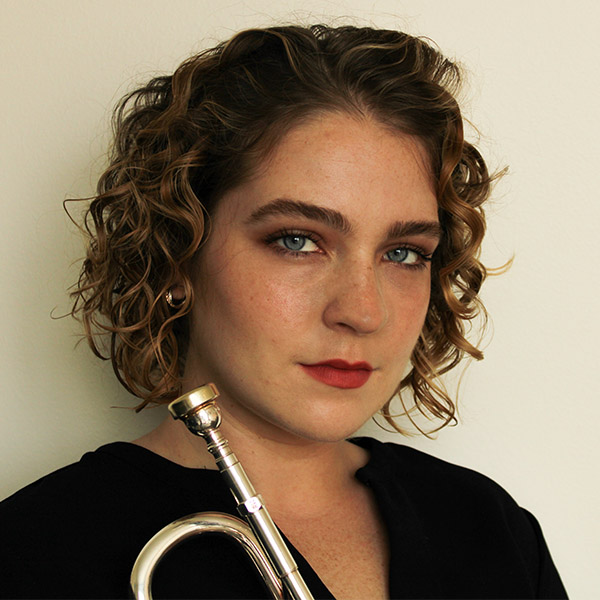
Rebecca Oliverio
Trumpet | Trombone
Rebecca Oliverio plays the trumpet with the Lyric Opera Orchestra.
Tuba
Timpani
Percussion
-

Douglas Waddell
Percussion
Douglas Waddell is a percussionist with the Lyric Opera Orchestra.
-

Eric Millstein
Percussion
Eric Millstein is a percussionist with the Lyric Opera Orchestra.
Harp
-
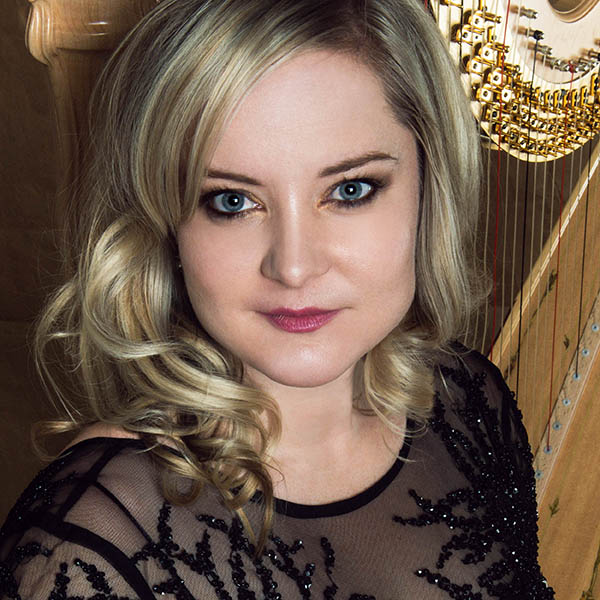
Lynn Williams
Harp
Marguerite Lynn Williams plays the harp with the Lyric Opera Orchestra.
Extra Musicians
Eleanor Bartsch, violin
Cristina Buciu, violin
Jennifer Cappelli, violin
Laura Chen, violin
Injoo Choi, violin
Lisa Fako, violin
Renee-Paule Gauthier, violin
Sheila Hanford, violin
Michele Lekas, violin
Karyn Macfarlane, violin
Rika Seko, violin
Karl Davies, viola
Amanda Grimm, viola
Sam Pedersen, viola
Rebecca Swan, viola
Paula Kosower, cello
Robyn Neidhold, cello
Jeremy Attanaseo, bass
Anne Bach, oboe
Trevor O’Riordan, clarinet
William Buchman, bassoon
Hanna Sterba, bassoon
Miles Maner, contrabassoon
Kelsey Wiliams, horn
Mike Brozick, trumpet
Mark Fry, bass trombone
Rich Janicki, percussion
Lauren Hayes, harp
Chris Reynolds, piano
-

John Rosenkrans
Librarian
John Rosenkrans is the librarian for the Lyric Opera Orchestra.
-

Crozet Duplantier
-

Christine Janicki
Stageband Contractor
Christine Janicki is the stageband contractor for the Lyric Opera Orchestra.
* On leave, 2022/23 Season
** Season Substitute
The Lyric Opera Orchestra string sections utilize revolving seating. Players behind the front desk change seats systematically and are listed alphabetically in the roster above.
Sunday in the Park with Lyric’s Rising Stars is generously made possible by
Lead sponsor

with additional support from
Rhoda & Henry Frank Family Foundation
Walter E. Heller Foundation
CNA
In Loving Memory of Beatrice G. Crain by the
Crain-Mailing Foundation
The Recording Industry’s Music Performance Trust Fund
Film Funds Trust Funds
Debbie K. Wright
Presented in cooperation with The City of Chicago and Millennium Park.







